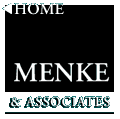

|
|
| The PRO-Productivity System (tm) | |
|
PLANNING THE PLAN
Establishing realistic goals for an ESOP is the responsibility and the prerogative of top management.
The initial planning phase of the PRO-Productivity System (tm) conventionally involves only the company president and perhaps one or two advisors.
It is pointless to invite creative contributions on plan design and implementation from second-level management until the existing shareholders are comfortable with a stock-based employee program.
Owners and top management select from two broad options when instituting an Employee Stock Ownership Plan.
Option I: Keep Total Control
Almost all company founders and traditional managers initially mistrust the idea of shared ownership because they fear it represents shared control.
Actually, voting control over ESOP stock is held by a board-appointed trustee under the terms of the Employee Stock Ownership Trust. An ESOT, like any trust arrangement, is a means for unbundling the attributes of ownership: it separates control over the stock from the financial benefit of ownership. Control is retained by the trustee directed by a committee of the board--often a single individual, the founder or president of the company. The trustee and plan committee do, of course, have the fiduciary obligation to manage the trust for the exclusive benefit of plan participants.
ESOP is not about changing control unless and until current owners seek to transfer control.
At that point and only then, successor trustees and plan committee members can be designated. This is true even if 100% of the stock is held in the ESOP.
The law requires virtually no disclosure to ESOP participants beyond the value of their individual personal accounts. At separation from service, the employees are entitled to the value of their accounts under the terms specified in the plan documents. Generally, they receive cash rather than stock in the company. Thus, only active employees participate in ownership. Even companies which encourage a high degree of employee autonomy and participative decision-making very seldom permit employees to vote the stock in their trust accounts. This does, however, constitute a design option that could be incorporated into a plan immediately or at some later date at the discretion of the Board of Directors. Experience shows that employees do not seek voting rights. Rather, they wish to have some input into the way their own jobs are executed.
Some owners prudently decide to use ESOP only for financial purposes.
For them, gaining the ability to cash out a shareholder tax-free and deduct the transaction is reason enough to create an ESOP. Other companies only seek the ability to acquire expansion capital on a pre-tax basis.
In such companies, employees should simply be educated about the structure of the employee ownership trust just as if it were any other sort of employee retirement plan. Employee communications should clearly recognize that no significant change is planned in corporate operations. An ESOP can be a very welcome and rewarding retirement program even if the company does not wish, at the present time, to undertake a participatory productivity enhancement campaign.
In our experience, hundreds of successful transactions have been accomplished without any change whatsoever in the client's management style or control systems.
Option II: Encourage Participation
Other employers, determined to maximize productivity and corporate growth, launch a formal program to encourage Participation and Responsibility through Ownership: the PRO-Productivity System (tm).
Even the rare managers who decide at the outset to target a high degree of employee involvement in the decision making process should recognize that the program must be phased in at a pace which permits everyone involved to assimilate the new corporate culture.
"'Improved productivity' and other benefits assigned to the ESOP are in reality the results of a new corporate culture in which the ESOP is a cardinal ingredient Without the associated change in corporate culture, the ESOP becomes only an employee benefit, albeit an excellent one. But why settle for this lesser goal when the corporate culture can be achieved at the same time?" -- Warren Braun Comsonics14
Much more usually, managers do not know how far they wish to develop the program. Unless they have some prior experience with an employee ownership culture, they are obviously ill-advised to institute radical change overnight.
The PRO-Productivity System (tm) deliberately anticipates a measured pace of change. As each phase of the program is completed, the results are subject to careful assessment. Before promises of a more participatory environment are unveiled to the rank and file, reasonable comfort is established among middle managers. Experience shows that no program can succeed without a firm commitment from the supervisory and middle management level.
If full implementation of the PRO-Productivity System (tm) seems premature, shareholders and top management can rein in change at no risk. The Employee Stock Ownership Plan still constitutes a valuable, controlled, in-house market for their stock and a reasonable retirement program for employees, pending more expansive use of its potential.
Back to the Index |